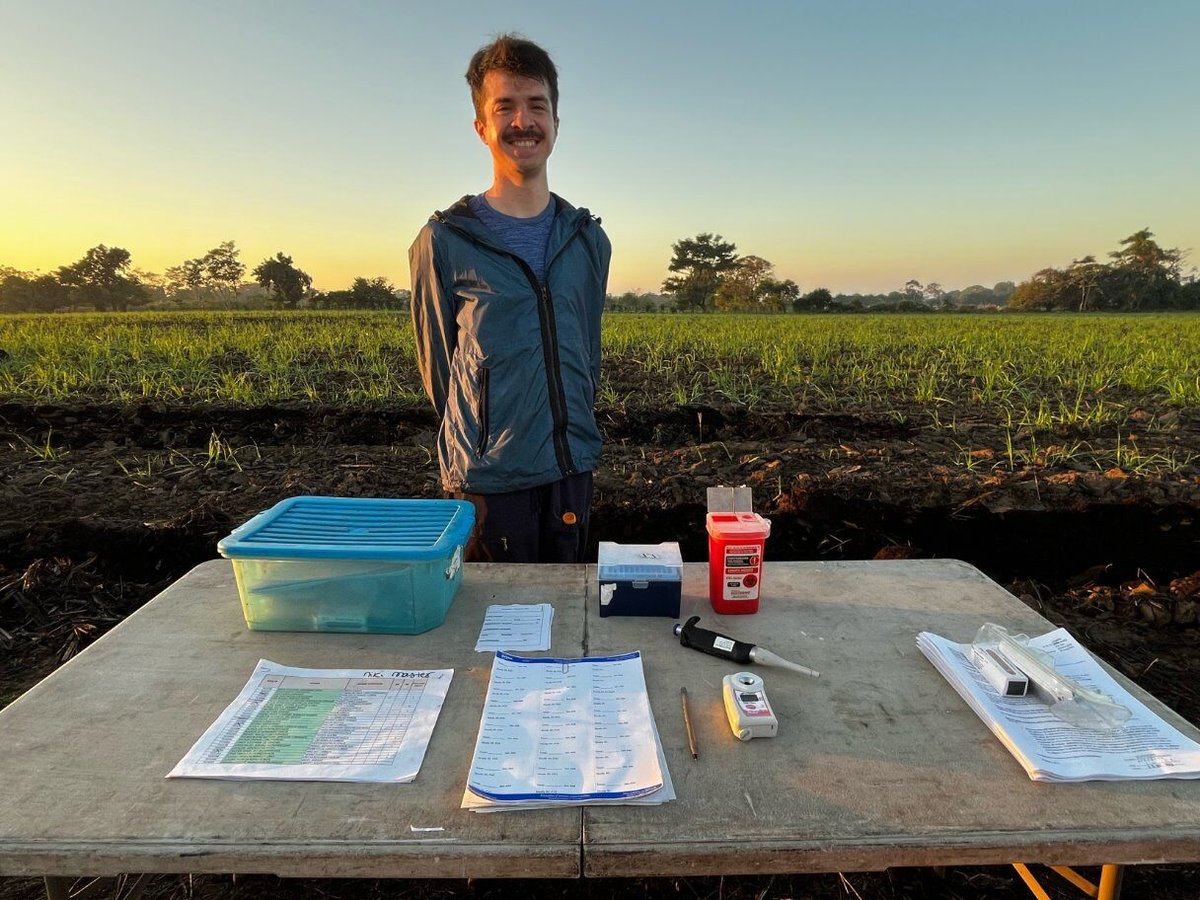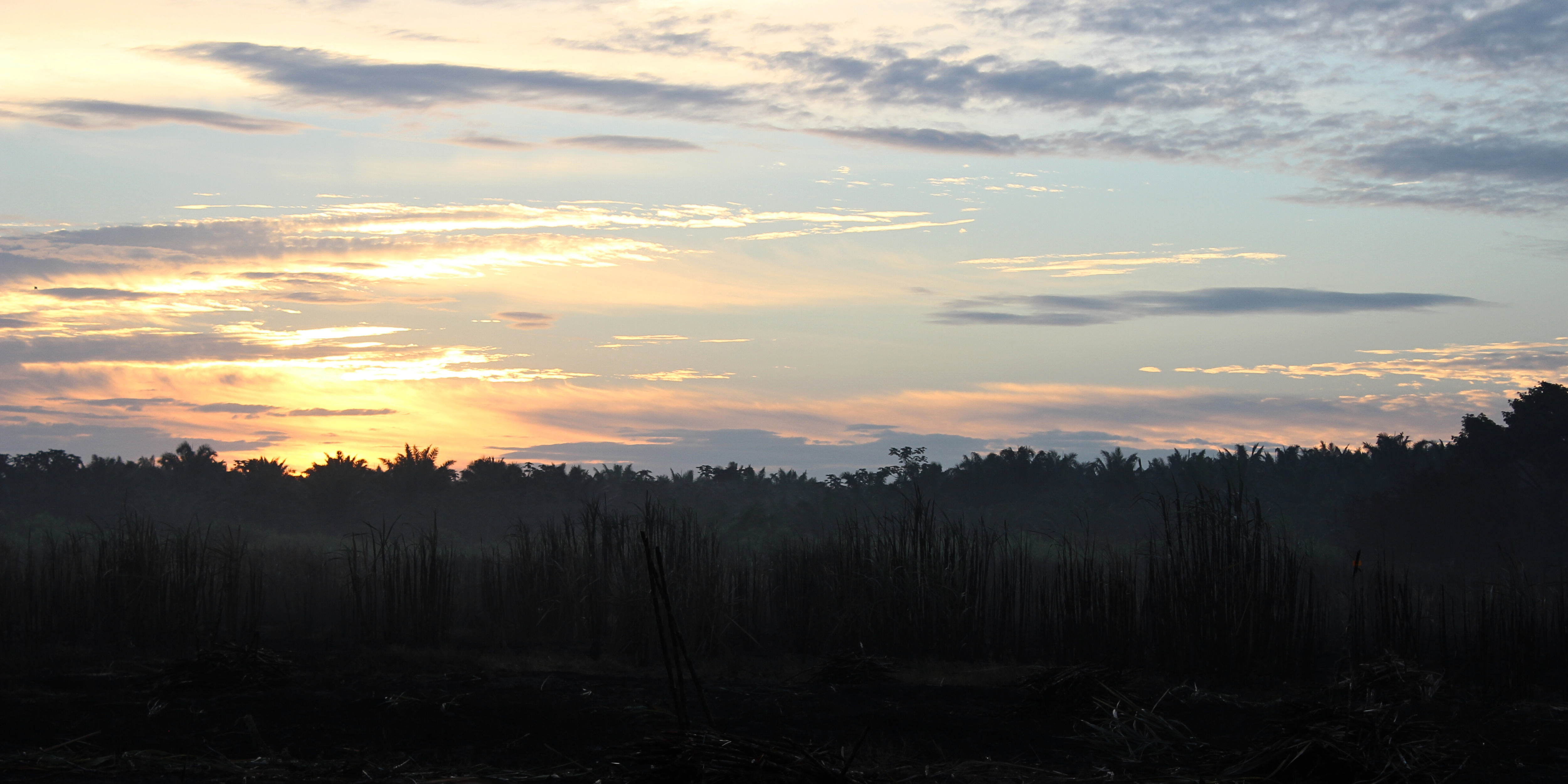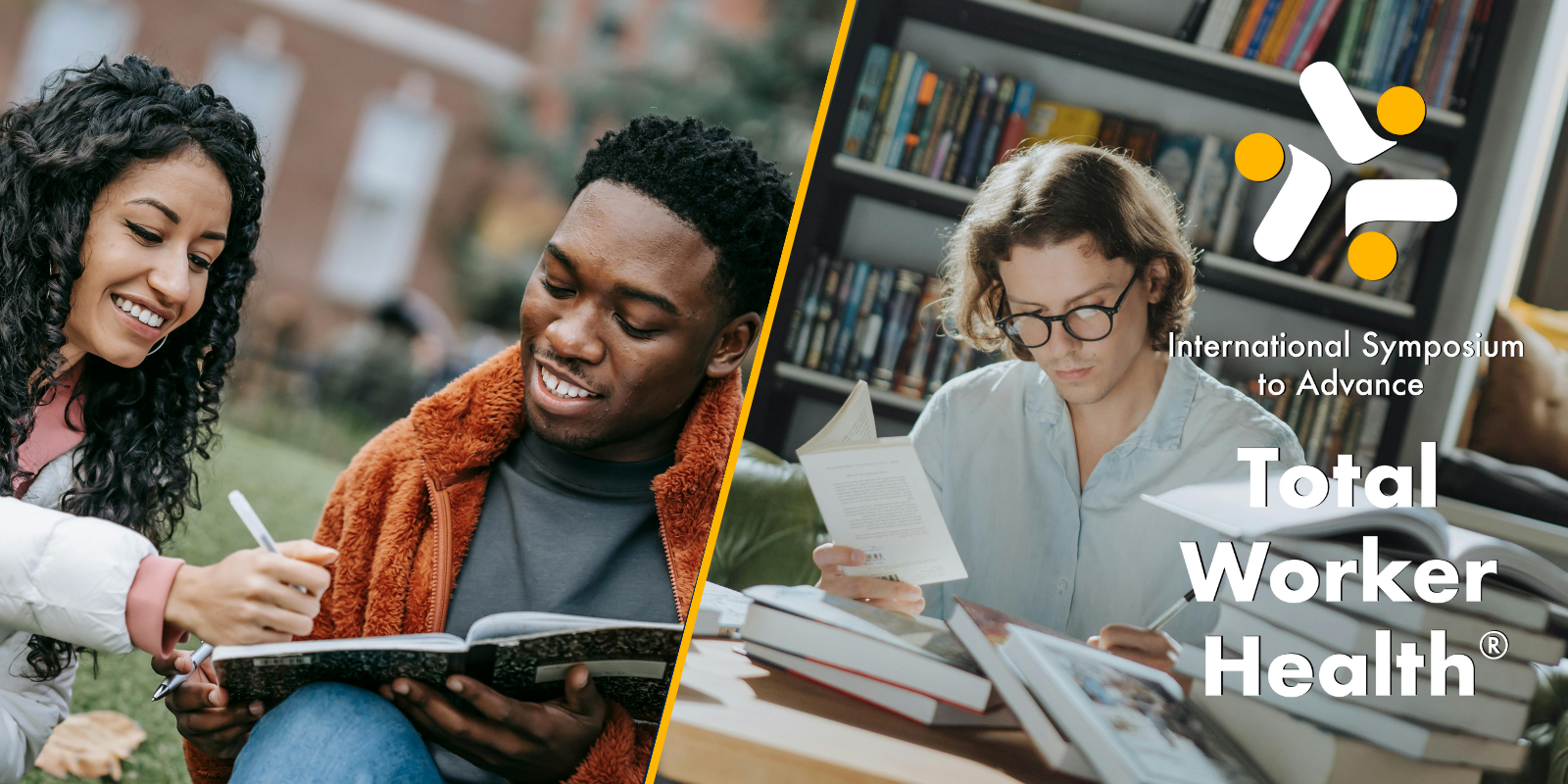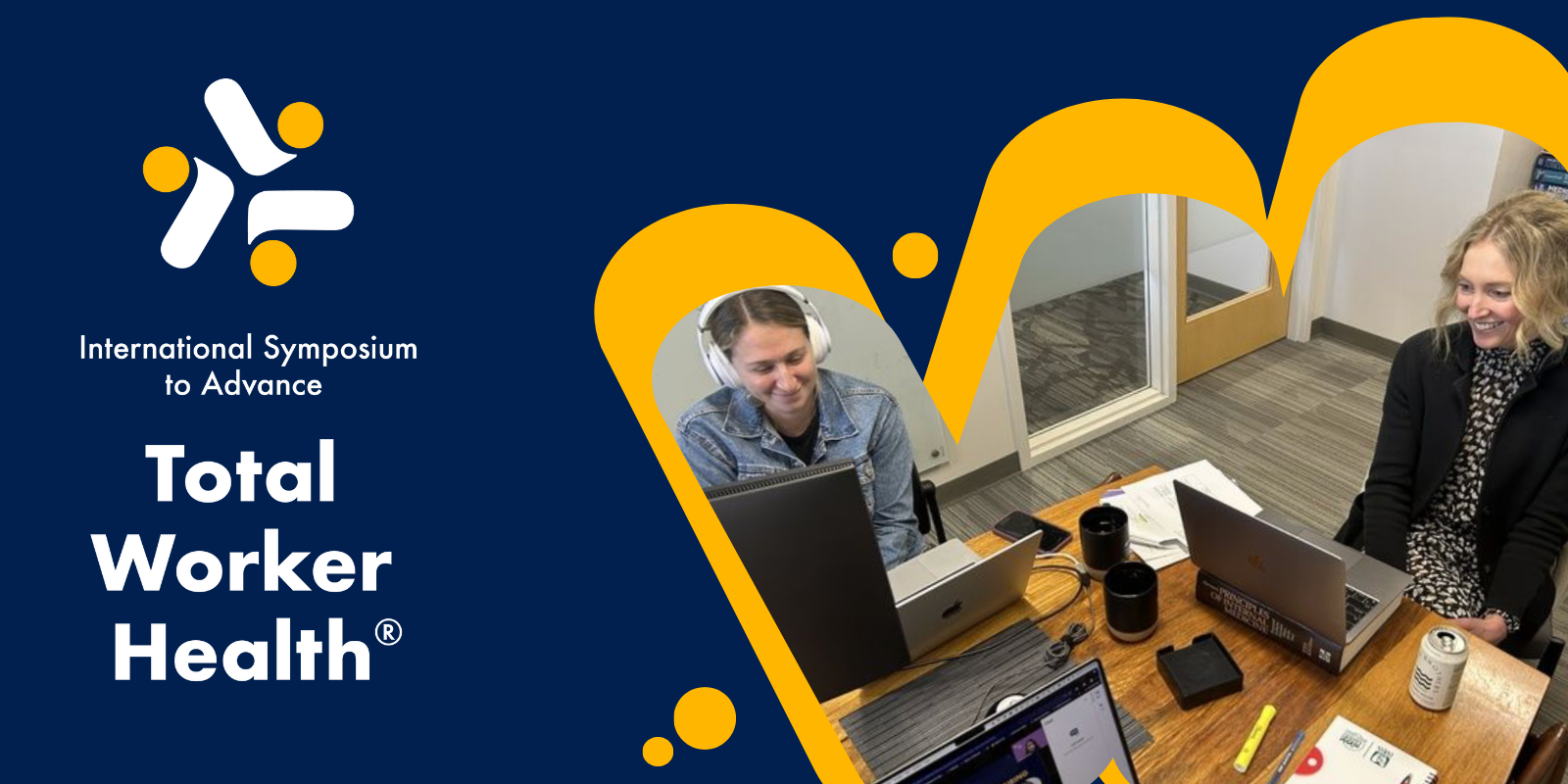Madison Goering, MSW, MPH, senior professional Research Assistant at the Centers for Health, Work & Environment reflects on her recent research trip to Guatemala.
It’s always nice to see familiar faces in the field.
At the Centers for Health, Work & Environment, we are in our second year studying the effects of air pollution and heat on the kidney health of female sugarcane workers in Guatemala. Throughout the harvest season at Pantaleon, the women work in small groups on tasks like seed sowing, bundling cut sugarcane, and creating irrigation channels.
The field research team meets them early, as the pink sunrise intensifies to a bright blue, before their workday begins. As they come up to the registration desk, I give a warm hello to those I recognize and introduce myself to the new faces.
Local Partnerships
During the morning data collection, women pass through a series of stations to check their vitals, draw blood, and fasten a small backpack with an air pump on their backs. I’m surrounded by a tenacious research team who can quickly adapt to ever-changing field conditions. None of this work would be possible without our local partners. Our two phlebotomists are nurses who work at FUNSALUD, and support other research and vaccination efforts with the Center for Global Health at the Colorado School of Public Health. Most of our air exposure team is from the INAF Group, a Guatemalan industrial hygiene contractor.
I smile to myself as I overhear my colleague Nick congratulate someone for being the most hydrated of their entire group; I look over as he draws a smiley face on her ‘papelito,’ a piece of paper where we track their clinical results. Nick is a teacher from Guatemala City. In some ways I see Nick as the glue of the team, he brings levity and joy to the long days and knows the most “Pantaleon Trivia” since he has been a part of every field research visit the past eight years.

.jpeg?width=1200&length=1200&name=WhatsApp%20Image%202024-09-16%20at%2010.15.03%20PM%20(6).jpeg)
.jpeg?width=1200&length=1200&name=WhatsApp%20Image%202024-09-16%20at%2010.15.03%20PM%20(5).jpeg)
Field team from CHWE & Pantaleon. Madison and Nick on the bottom, with Karely Villarreal Hernandez in the middle-back with blue vest.
Returning to a Familiar Location
This year is a bit different than years past since we followed Year 1 participants from Pantaleon and began our research at a second comparison site, a banana plantation in northwest Guatemala. While this site, Trifinio, is new to me, CHWE previously collaborated with Dr. Edwin Asturias at the Center for Global Health to provide occupational health screenings there in 2016.
Karely Villarreal Hernandez, MPH, maybe the most familiar face to me, led the charge on getting this study site started at Trifinio. We are evaluating the relationship between workplace air and heat exposure on kidney function. She is a great leader, checking in to make sure that every team member has what they need for a successful day in the field, and circling back later to what supports we need to make the next day smoother.
This project has required quick problem solving and teamwork to adjust to the differences. For example, the banana plantation operations are under a packhouse, and the process involved repeatedly rinsing the bananas in water. Our team had to figure out how to get accurate field measurements without getting the equipment wet.
Additionally, since Trifinio women work on an assembly line, their break times are variable, they don’t all stop at once. Despite the various challenges, in one week the team was able to successfully recruit 72 women into the study.
We’ll be heading back to Guatemala in late April to reconnect with the women and see how the harvest season has been this year. I look forward to greeting the familiar faces of our partners and workers as we continue to strive towards scientific discovery and great health, safety and well-being for agricultural workers.
About the Centers for Health, Work & Environment
The Centers for Health, Work & Environment (CHWE) educates and trains future leaders, conducts research, and designs and implements practical solutions to occupational safety and health challenges. CHWE collaborates with faculty, students, and community partners to advance worker health, safety, and well-being. Part of the Colorado School of Public Health, it is home to one of 10 nationwide Centers of Excellence for Total Worker Health®, the Mountain & Plains Education and Research Center (MAP ERC), and the Climate Impacts on Worker Health & Safety (CIWHS) Center. CHWE is located at the University of Colorado Anschutz Medical Campus in Aurora, Colorado.
About the Colorado School of Public Health
The Colorado School of Public Health is the first and only accredited school of public health in the Rocky Mountain Region, attracting top-tier faculty and students from across the country and providing a vital contribution towards ensuring our region’s health and well-being. Collaboratively formed in 2008 by the University of Colorado, Colorado State University, and the University of Northern Colorado, the Colorado School of Public Health provides training, innovative research, and community service to actively address public health issues, including chronic disease, access to health care, environmental threats, emerging infectious diseases, and costly injuries. For more information about ColoradoSPH, please visit https://coloradosph.cuanschutz.edu






